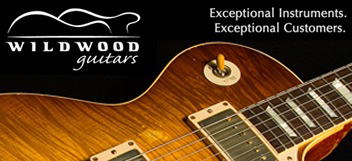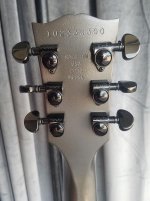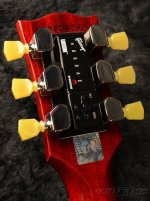I've seen a few examples of 100% authentic Gibson headstocks that have a very sharp headstock/neck transition. Attached is the back of a 2013 Government Les Paul that illustrates what I'm talking about. This particular headstock is very triangular as it extends into the neck. However, I've seen a handful of others with more rectilinear carves, some that transition more or less into the neck, and of course many more with a much softer carve. Aside from the whole volute/non-volute question, does anyone have any more info on the variation of this design detail?
Attachments
Last edited:





